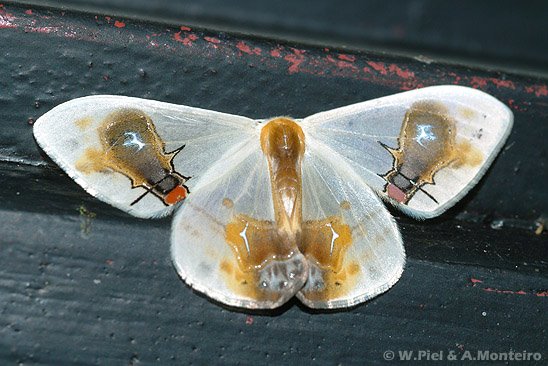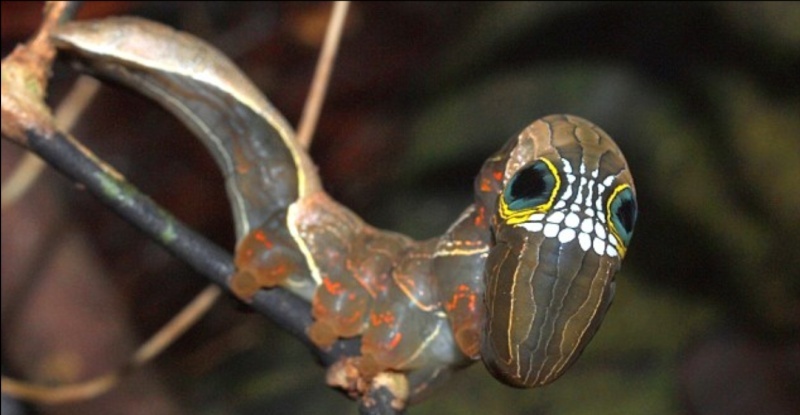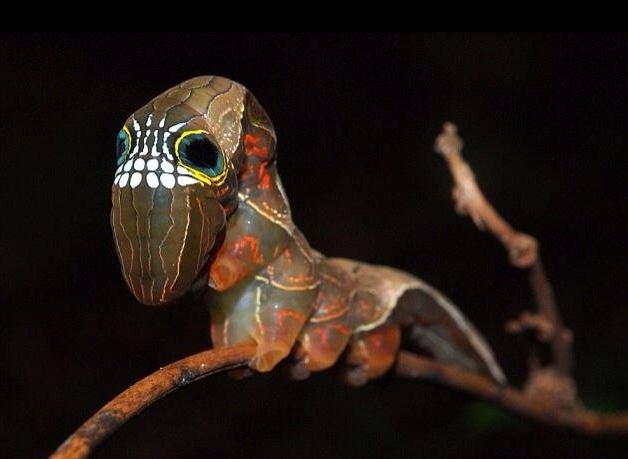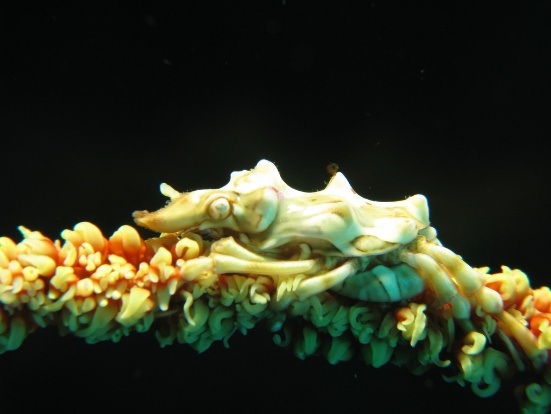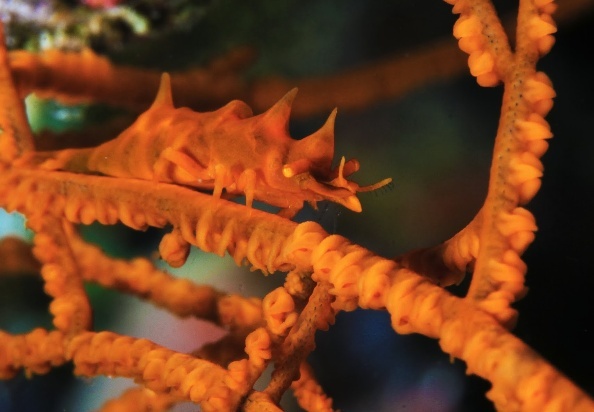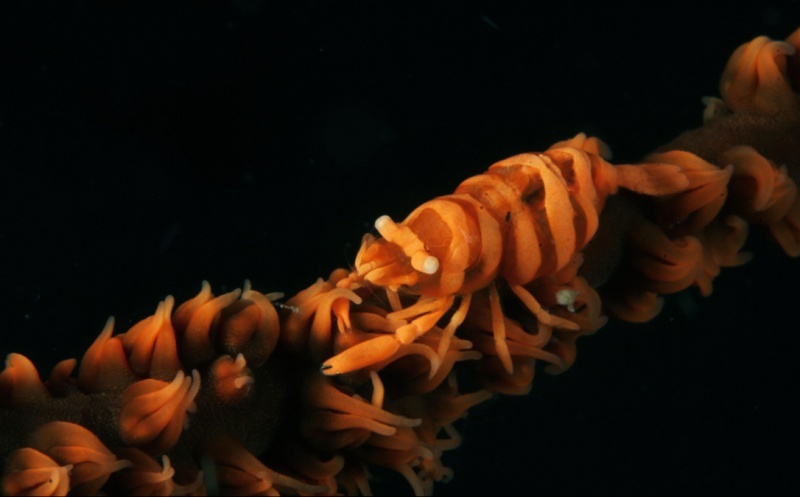Underwater masters of disguise - Wild Indonesia - BBC
https://www.youtube.com/watch?v=yalRGgrm3ac
Can Cuttlefish camouflage in a living room?
https://www.youtube.com/watch?v=pgDE2DOICuc
https://www.youtube.com/watch?v=cgdVVU8tBTQ
http://www.evolutionnews.org/2011/02/butterfly_mimicry_a_huge_probl044101.html
http://dennisdjones.wordpress.com/2011/02/20/biological-camouflage-and-mimicry/
http://news.sciencemag.org/biology/2014/04/scienceshot-chameleon-vine-discovered-chile#disqus_thread
http://creationrevolution.com/the-hindsight-of-mimicry/
The balance of Dazzled and Deceived focuses on the genetics and development of mimetic patterns, as revealed mostly through work with butterflies. The problems here are huge for evolutionary biologists. How does natural selection build a complex organism with all its integrated parts through fixation of random mutations? Butterfly mimicry has been a classic arena in which to tackle this problem precisely because the gambit is so obvious: To be a good mimic of another species requires many pattern elements of bars, lines, colors, and even wing shapes to change at once. Moreover, how can this process produce females that are perfect mimics and males that look nothing of the sort within a single species?
why the female uses camouflage, but the male don't. 2. Who would certain species , like frogs, butterflies, frogs, insects , fish, birds etc. need camouflage for survival, while many of the same species, living in the same environment, don't ? why is it a mechanism found by animals of very distant philogeny ?
In search of nature’s camouflage
The cuttlefish, known as the “chameleon of the sea,” can rapidly alter both the color and pattern of its skin, helping it blend in with its surroundings and avoid predators. It uses sophisticated biomolecular nanophotonic system underlying the cuttlefish’s color-changing ways.
The cuttlefish (Sepia officinalis) is a cephalopod, like squid and octopuses. Neurally controlled, pigmented organs called chromatophores allow it to change its appearance in response to visual cues, but scientists have had an incomplete understanding of the biological, chemical, and optical functions that make this adaptive coloration possible.
To regulate its color, the cuttlefish relies on a vertically arranged assembly of three optical components: the leucophore, a near-perfect light scatterer that reflects it uniformly over the entire visible spectrum; the iridophore, a reflector containing a stack of thin films; and the chromatophore. This layering enables the skin of the animal to selectively absorb or reflect light of different colors, said coauthor Leila F. Deravi, a research associate in bioengineering at SEAS.
“Chromatophores were previously considered to be pigmentary organs that acted simply as selective color filters,” Deravi said. “But our results suggest that they play a more complex role; they contain luminescent protein nanostructures that enable the cuttlefish to make quick and elaborate changes in its skin pigmentation.”
When the cuttlefish actuates its coloration system, each chromatophore expands. The surface area can change as much as 500 percent. The Harvard-MBL team showed that within the chromatophore, tethered pigment granules regulate light through absorbance, reflection, and fluorescence, in effect functioning as nanoscale photonic elements, even as the chromatophore changes in size.
“The cuttlefish uses an ingenious approach to materials composition and structure, one that we have never employed in our engineered displays,” “It is extremely challenging for us to replicate the mechanisms that the cuttlefish uses. For example, we cannot yet engineer materials that have the elasticity to expand 500 percent in surface area. The cuttlefish may have found a way to compensate for this change in richness of color by being an ‘active’ light emitter (fluorescent), not simply modulating light through passive reflection.”
“Cuttlefish skin is unique for its dynamic patterning and speed of change,” Hanlon said. The cuttlefish uses a tether system that connects the individual pigment granules.”
“Throughout history, people have dreamed of having an ‘invisible suit,’” Parker said. “Nature God ( lets correct that ) solved that problem, and now it’s up to us to replicate this genius, so, like the cuttlefish, we can avoid our predators.”




https://www.youtube.com/watch?v=yalRGgrm3ac
Can Cuttlefish camouflage in a living room?
https://www.youtube.com/watch?v=pgDE2DOICuc
https://www.youtube.com/watch?v=cgdVVU8tBTQ
http://www.evolutionnews.org/2011/02/butterfly_mimicry_a_huge_probl044101.html
http://dennisdjones.wordpress.com/2011/02/20/biological-camouflage-and-mimicry/
http://news.sciencemag.org/biology/2014/04/scienceshot-chameleon-vine-discovered-chile#disqus_thread
http://creationrevolution.com/the-hindsight-of-mimicry/
The balance of Dazzled and Deceived focuses on the genetics and development of mimetic patterns, as revealed mostly through work with butterflies. The problems here are huge for evolutionary biologists. How does natural selection build a complex organism with all its integrated parts through fixation of random mutations? Butterfly mimicry has been a classic arena in which to tackle this problem precisely because the gambit is so obvious: To be a good mimic of another species requires many pattern elements of bars, lines, colors, and even wing shapes to change at once. Moreover, how can this process produce females that are perfect mimics and males that look nothing of the sort within a single species?
why the female uses camouflage, but the male don't. 2. Who would certain species , like frogs, butterflies, frogs, insects , fish, birds etc. need camouflage for survival, while many of the same species, living in the same environment, don't ? why is it a mechanism found by animals of very distant philogeny ?
In search of nature’s camouflage
The cuttlefish, known as the “chameleon of the sea,” can rapidly alter both the color and pattern of its skin, helping it blend in with its surroundings and avoid predators. It uses sophisticated biomolecular nanophotonic system underlying the cuttlefish’s color-changing ways.
The cuttlefish (Sepia officinalis) is a cephalopod, like squid and octopuses. Neurally controlled, pigmented organs called chromatophores allow it to change its appearance in response to visual cues, but scientists have had an incomplete understanding of the biological, chemical, and optical functions that make this adaptive coloration possible.
To regulate its color, the cuttlefish relies on a vertically arranged assembly of three optical components: the leucophore, a near-perfect light scatterer that reflects it uniformly over the entire visible spectrum; the iridophore, a reflector containing a stack of thin films; and the chromatophore. This layering enables the skin of the animal to selectively absorb or reflect light of different colors, said coauthor Leila F. Deravi, a research associate in bioengineering at SEAS.
“Chromatophores were previously considered to be pigmentary organs that acted simply as selective color filters,” Deravi said. “But our results suggest that they play a more complex role; they contain luminescent protein nanostructures that enable the cuttlefish to make quick and elaborate changes in its skin pigmentation.”
When the cuttlefish actuates its coloration system, each chromatophore expands. The surface area can change as much as 500 percent. The Harvard-MBL team showed that within the chromatophore, tethered pigment granules regulate light through absorbance, reflection, and fluorescence, in effect functioning as nanoscale photonic elements, even as the chromatophore changes in size.
“The cuttlefish uses an ingenious approach to materials composition and structure, one that we have never employed in our engineered displays,” “It is extremely challenging for us to replicate the mechanisms that the cuttlefish uses. For example, we cannot yet engineer materials that have the elasticity to expand 500 percent in surface area. The cuttlefish may have found a way to compensate for this change in richness of color by being an ‘active’ light emitter (fluorescent), not simply modulating light through passive reflection.”
“Cuttlefish skin is unique for its dynamic patterning and speed of change,” Hanlon said. The cuttlefish uses a tether system that connects the individual pigment granules.”
“Throughout history, people have dreamed of having an ‘invisible suit,’” Parker said. “




Last edited by Admin on Sun Jun 01, 2014 7:46 pm; edited 9 times in total


